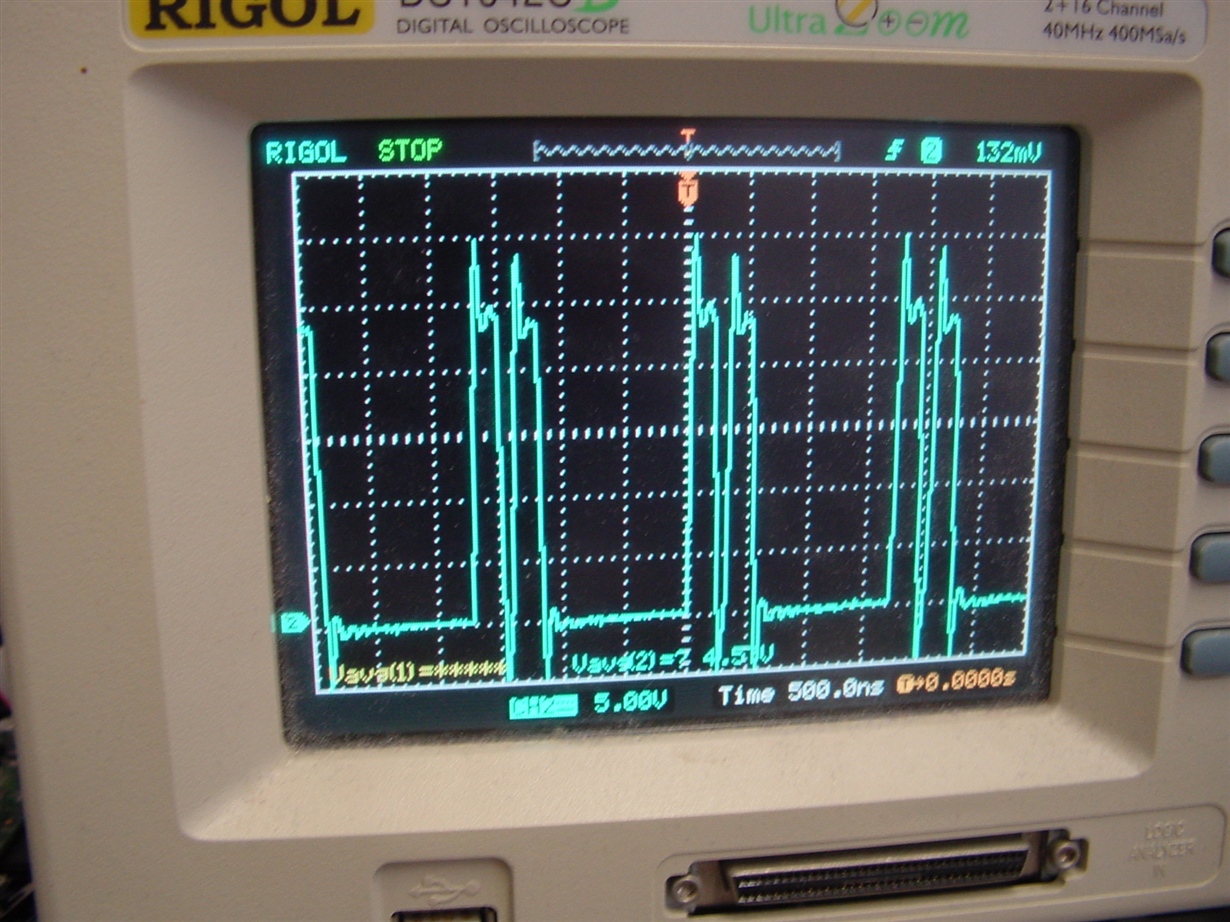I implemented a DCDC converter: 24V nominal to 5V at 2A. Webbench suggested the LM25011. My circuit is now operational, and seems to function quite well, although it gets a bit hot.... I just measured: 25V @470mA, 11.75W, 5V at 2A out: 10W. So we should be seeing about 1.75W of losses in the DCDC part. (and currently 0.12W in the trace to the output connector... already fixed in the design).
Anyway, the output looks fine, but the scope on the switching node shows something I didn't expect: There are two pulses close together and then a bigger gap before the next. Looks as if it is cycle skipping or something like that. But at 2A I shouldn't be "near idle", right?
So... Is this normal / expected behaviour, or should I change something?
P.S. bugreport: On the main ti.com website, when I click support, I can chose product support, but then when I click "
- Development and troubleshooting" nothing happens.
The same "nothing happens" when I browse to "report an issue with the website".....


